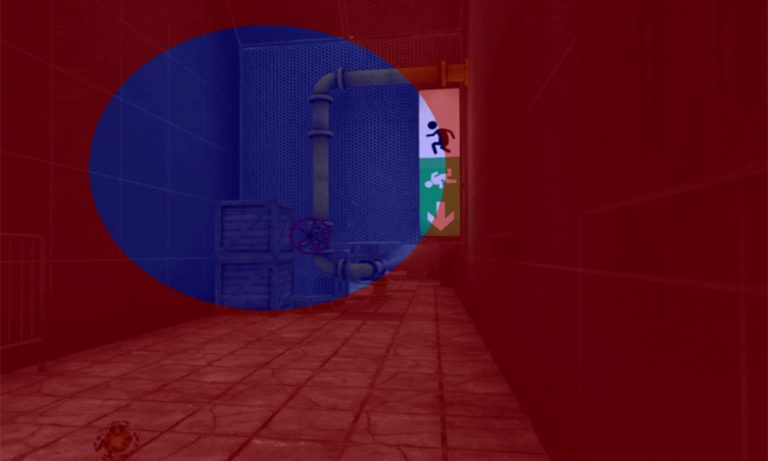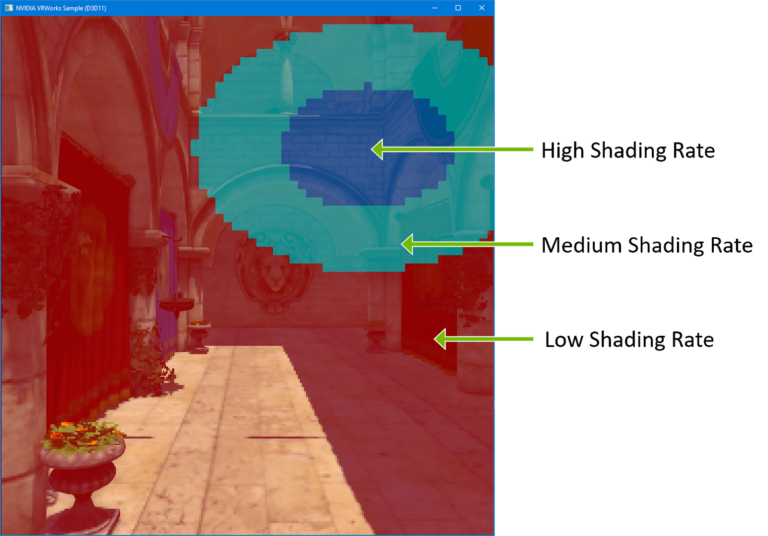
NVIDIA is releasing the latest version of Variable Rate Supersampling (VRSS), which now includes gaze-tracked foveated rendering. VRSS 2 with dynamic foveated region at 8x shading rate. The blue foveated region has the highest image quality and location determined by eye gaze-tracking. Image of Boneworks courtesy of Stress Level Zero. Foveated rendering is a technique where a region of the��
]]>
We introduced Variable Rate Shading (VRS) last year with the Turing architecture. This new, easy to implement rendering technique allows developers to vary the amount of processing power spent across the image, to spend time and increase quality in the areas where they are most needed. Since virtual reality demands both a high performance and a high image quality, VRS is the perfect fit for VR��
]]>
VR head-mounted displays (HMDs) continue to dramatically improve with each generation. Resolution, refresh rate, field of view, and other features bring unique challenges to the table. The NVIDIA VRWorks Graphics SDK has been offering various rendering technologies to tackle the challenges brought forth by the increasing capabilities of these new HMDs. NVIDIA Turing introduced Variable Rate��
]]>
ZeroLight��s proprietary visualisation platform is used across the automotive industry. Offering real-time product rendering, hyper-realistic visuals, our proprietary supersampling technology, and fully configurable models, our platform has enabled automotive OEMs to exceed their customers�� expectations with a range of dynamic, high-quality experiences for various outputs.
]]>
NVIDIA Turing GPUs enable a new, easily implemented rendering technique, Variable Rate Shading (VRS). VRS increases rendering performance and quality by applying a varying amount of processing power to different areas of the image. VRS works by changing the number of pixels that can be processed by a single pixel shader operation. Single-pixel shading operations can now be applied to a block��
]]>